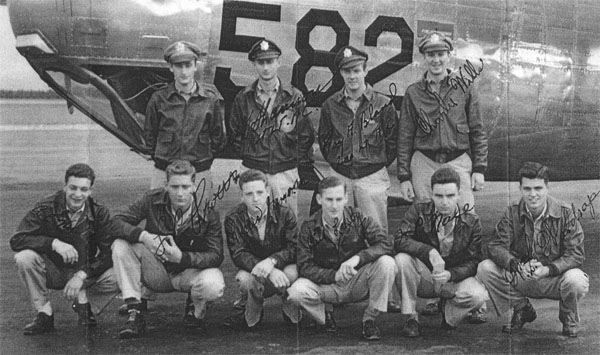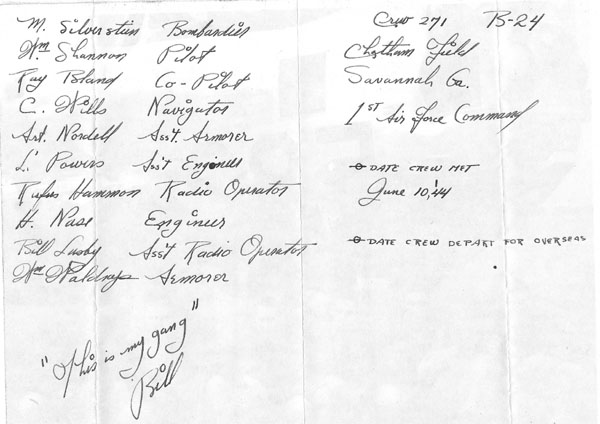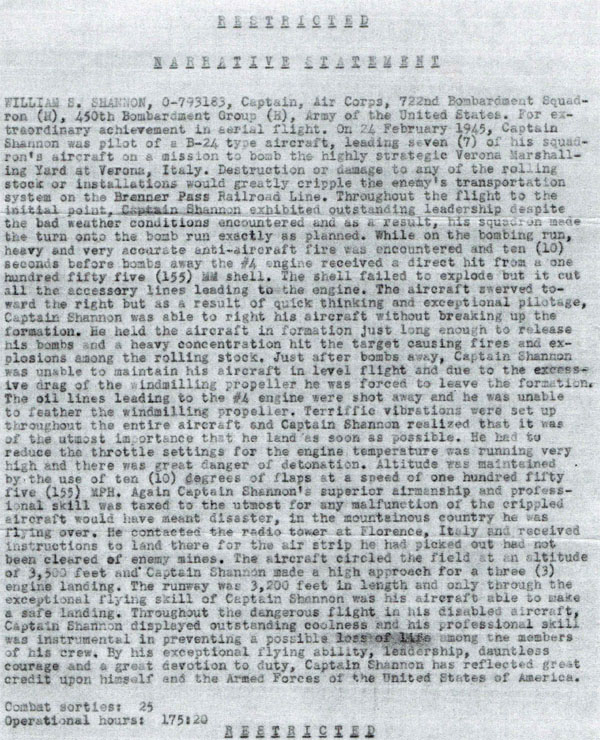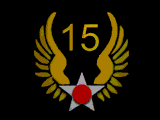|
|
1st Lt. William Shannon Crew
722nd Squadron
|

Back Row - Left to Right
Lt. M. Silverstein - Bombardier
1st Lt. William Shannon - Pilot
2nd Lt. Ray A. Bland - Co-Pilot
Charles Wills - Navigator
Front Row - Left to Right
Cpl. Arthur C. Nordell - Assistant. Armorer/Gunner
Cpl. Lawrence C. Powers - Assistant Engineer/Gunner
Cpl. Rufus W. Hamman - Radio Operator/Gunner
Sgt. William E. Lusby - Assistant Radio Operator/Gunner
Cpl. Howard P. Nase - Engineer/Gunner
Sgt. William L. Waldrop - Armorer/Gunner
|

Picture taken 10 June 1944 at Chatham Field, Savannah, Georgia
|

Copy of the narrative that was written for the mission that Lt. Shannon was awarded the Distinguished Flying Cross
|
R E S T R I C T E D
NARATIVE STATEMENT
WILLIAM S. SHANNON, 0-793183, Captain, Air Corps, 722nd Bombardment Squadron (H), 450th Bombardment Group (H), Army of the United States.
For extraordinary achievement in aerial flight.
On
24 February 1945, Captain Shannon was pilot of a B-24 type aircraft, leading
seven (7) of his squadron's aircraft on a mission to bomb the highly strategic
Verona Marshalling Yard at Verona, Italy.
Destruction or damage to any of the rolling stock or installations would
greatly cripple the enemy's transportation system on the Brenner Pass Railroad
Line.
Throughout the flight to the
initial point, Captain Shannon exhibited outstanding leadership despite the bad
weather conditions encountered and as a result, his squadron made the turn onto
the bomb run exactly as planned. While
on the bombing run, heavy and very accurate anti-aircraft fire was encountered
and ten (10) seconds before bombs away the #4 engine received a direct hit from
a one hundred fifty five (155) MM shell.
The shell failed to explode but it cut all the accessory lines leading
to the engine. The aircraft swerved
toward the right but as a result of quick thinking and exceptional pilotage,
Captain Shannon was able to right his aircraft without breaking up the
formation. He held the aircraft in
formation just long enough to release his bombs and a heavy concentration hit
the target causing fires and explosions among the rolling stock.
Just after bombs away, Captain Shannon was
unable to maintain his aircraft in level flight and due to the excessive drag
of the windmilling propeller he was forced to leave
the formation. The oil lines leading to
the #4 engine were shot away and he was unable to feather the windmilling propeller.
Terrific vibrations were set up throughout the entire aircraft and
Captain Shannon realized that it was of the utmost importance that he land as
soon as possible. He had to reduce the
throttle settings for the engine temperature was running very high and there
was great danger of detonations.
Altitude was maintained by the use of ten (10) degrees of flaps at a
speed of one hundred fifty five (155) MPH.
Again Captain Shannon's superior airmanship and professional skill was
taxed to the utmost for any malfunction of the crippled aircraft would have meant
disaster, in the mountainous country he was flying over. He contacted the radio tower at Florence,
Italy and received instructions to land there for the air strip he had picked
out had not been cleared of enemy mines.
The aircraft circled the field at an altitude of 3,500 feet and Captain
Shannon made a high approach for a three (3) engine landing. The runaway was 3,200 feet in length and only
through the exceptional flying skill of Captain Shannon was his aircraft able
to make a safe landing.
Throughout the dangerous
flight in his disabled aircraft, Captain Shannon displayed outstanding coolness
and his professional skill was instrumental in preventing a possible loss of
life amount the members of his crew. By
his exceptional flying ability, leadership, dauntless courage and a great
devotion to duty, Captain Shannon has reflected great credit upon himself and
the Armed Forces of the United States of America.
Combat sorties: 25
Operational hours: 175:20
R E S T R I C T E D
|
Information provided by William L. Waldrop
Link To Additional Information
|



